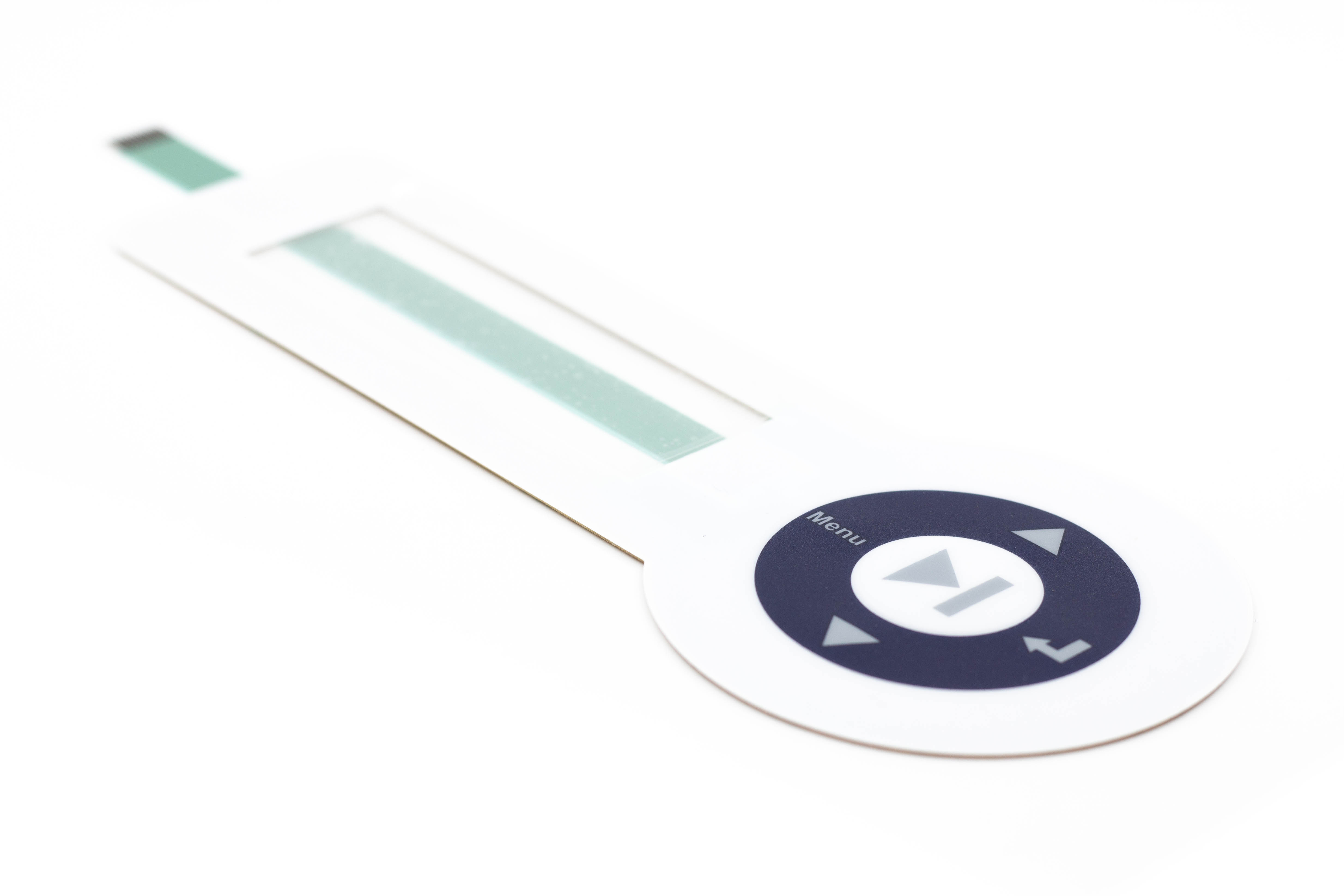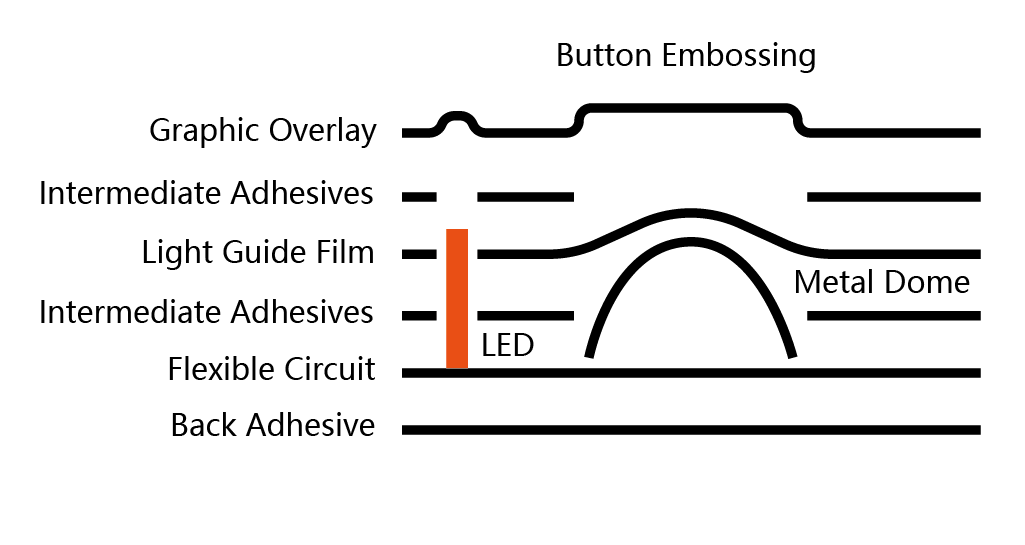The Manufacturing Refine Behind Membrane Switch: What You Required to Know
The manufacturing procedure behind membrane switches over combines careful layout, material option, and quality assurance. It starts with comprehending the intricacies of membrane layer switch style and progresses with various stages, consisting of material selections and printing techniques. Each stage plays an important duty in guaranteeing capability and sturdiness. The intricacies of layer building and the strenuous screening standards might disclose insights that are not promptly apparent. What lies beyond these foundational elements?
Comprehending Membrane Layer Switch Style
Membrane layer buttons might show up simple at first glimpse, their style includes complex factors to consider that assure capability and resilience. The design process begins with a complete understanding of customer needs, consisting of the user interface's desired application and ecological variables. Ergonomics is a crucial element, as the layout must facilitate ease of usage while making certain that responsive responses fulfills individual expectations.Moreover, the layering of elements, such as graphic overlays, adhesive layers, and conductive traces, must be precisely crafted. membrane switch. This split arrangement not just affects the switch's responsiveness but also influences its long life. Interest is provided to the sealing strategies used to secure against moisture and dirt, which might jeopardize performance. In addition, style considerations encompass aesthetics, where color pattern and visual quality improve user experience. Inevitably, the style of membrane switches over balances functionality, customer experience, and toughness, guaranteeing that they fulfill the needs of various applications properly
Materials Made Use Of in Membrane Layer Switch Production
When selecting products for membrane button manufacturing, it is vital to consider both performance and toughness. The primary products include polyester and polycarbonate movies, which provide versatility and strength. These movies are often covered with glue to ensure correct bonding to substrates. Conductive inks, commonly composed of silver or carbon, are essential for creating electric links within the switch, permitting for dependable operation.Additionally, a safety layer, such as a hard coat, is regularly put on improve scrape resistance and longevity. The option of backing product, such as acrylic or foam, can substantially influence the switch's responsive feel and overall individual experience. Moreover, different ecological factors, consisting of temperature and humidity, ought to assist product selection to ensure peak efficiency in specific applications. Eventually, the ideal mix of products adds to the membrane switch's functionality and lifespan, making notified options crucial for manufacturers.
The Printing Process: Creating Graphics and Text
The printing process in membrane switch manufacturing plays a substantial duty in producing premium graphics and message. Numerous visuals layout techniques are employed to guarantee visual appeal and performance, while cautious ink choice techniques are necessary for toughness and efficiency. Comprehending these aspects is essential for accomplishing finest lead to membrane button layout.
Graphic Layout Techniques
Graphic style techniques play an essential duty in the printing process of membrane buttons, as they define just how graphics and message will ultimately show up on the last product. Reliable graphic layout includes the strategic usage of colors, fonts, and designs to boost readability and visual allure. Designers usually use vector graphics for scalability, ensuring that pictures remain sharp at different dimensions. Furthermore, focus to contrast and placement is important, as it affects user interaction and visual quality. The unification of branding elements, such as logos, have to be handled with treatment to keep brand stability. On the whole, thoughtful visuals style strategies add considerably to the performance and attractiveness of membrane buttons, influencing user experience and item efficiency.
Ink Option Methods
Choosing the proper ink is important for accomplishing the wanted aesthetic quality and sturdiness in membrane layer button manufacturing. Numerous ink types are utilized, including solvent-based, water-based, and UV-curable inks. Each kind supplies distinctive characteristics, such as adaptability, resistance, and attachment to ecological aspects. Solvent-based inks are usually preferred for their durability and vibrant colors, while water-based inks are more environmentally friendly yet might have constraints in attachment. UV-curable inks supply fast treating and robust performance. Additionally, shade matching techniques assure that the picked inks line up with style specs. Eventually, the choice of ink must consider variables such as application approach, substratum compatibility, and end-use requirements to achieve superior lead to membrane layer switch graphics and text.
Layer Building and Assembly

Material Choice Refine
A mindful option of materials is important in the manufacturing process of membrane layer buttons, as it straight affects her latest blog capability and durability. The primary materials made use of consist of polyester, polycarbonate, and various conductive inks. Polyester is frequently preferred for its outstanding resistance to chemicals and abrasion, making it appropriate for rough environments. Polycarbonate, on the other hand, offers exceptional clearness and effect resistance, which is valuable for applications calling for presence and effectiveness. Conductive inks, normally made up of silver or carbon, are essential for creating reliable electrical pathways. Additionally, the selection of glue materials influences the total integrity of the switch - membrane switch. Reviewing factors such as environmental direct exposure, responsive comments, and visual needs overviews suppliers in choosing the very best materials for their details applications
Layer Adhesion Techniques
Sticking layers in membrane switch building and construction is an essential procedure that guarantees capability and long life. Different adhesion methods are employed to safeguard excellent bonding between layers, which generally consist of the usage of adhesives, heat, and stress. Pressure-sensitive adhesives (PSAs) are typically made use of for their simplicity of application and immediate bonding capacities. Furthermore, thermal bonding strategies can be applied, where warmth is utilized to turn on sticky residential properties, securing a solid bond. The choice of bond approach mostly relies on the materials entailed and the particular application needs of the membrane switch. Correct alignment and consistent application of adhesives are vital to protect against defects, protecting the button operates successfully throughout its intended life expectancy.
Quality Assurance Measures
Ensuring top quality control during the layer building and setting up of membrane layer switches is vital for keeping performance and reliability. This directory process commonly involves a number of important measures, including extensive examinations at each phase of production. Producers use innovative screening approaches, such as peel tests and adhesion analyses, to validate the honesty of layer bonds. Additionally, visual evaluations are carried out to determine any type of flaws in printing or product incongruities. Ecological problems, such as temperature level and moisture, are meticulously checked to assure ideal curing and adhesion. Moreover, regular calibration of equipment aids keep specific production criteria. By applying these quality assurance procedures, makers can significantly decrease the risk of item failing, ensuring that the final membrane layer switches over satisfy the needed specifications and consumer assumptions.
Checking and Quality Control Measures

Developments in Membrane Switch Over Innovation
As developments in technology remain to develop, membrane buttons are taking advantage of cutting-edge advancements that enhance their capability and individual experience. One notable technology is the combination of capacitive touch technology, which permits more receptive and intuitive interface. This shift not just improves aesthetics however also minimizes mechanical wear and tear, prolonging the lifespan of the switches.Additionally, improvements in graphic overlay materials have actually resulted in boosted resilience and resistance to ecological factors such as wetness and UV light. These products now use enhanced clearness and Visit Website illumination, further raising the visual appeal.Furthermore, the consolidation of clever innovation is changing membrane layer switches right into interactive control board, enabling connection with IoT tools. This connectivity promotes a smooth user experience, paving the method for applications in various industries, from health care to customer electronics. Collectively, these advancements placement membrane changes as important components in contemporary gadget layout.
Regularly Asked Questions
The length of time Does the Membrane Layer Switch Over Production Refine Take?
The duration of the membrane switch manufacturing process can differ substantially. Factors such as complexity, materials utilized, and manufacturing quantity influence timelines, with common production varying from a couple of days to numerous weeks for conclusion.
What Are the Usual Applications for Membrane Layer Buttons?
Membrane switches are typically used in numerous sectors, consisting of auto controls, house devices, clinical tools, and customer electronic devices (membrane switch). Their convenience and longevity make them perfect for applications requiring user-friendly user interfaces and reliable efficiency in varied atmospheres
Can Membrane Switches Be Customized for Specific Needs?

What Is the Lifespan of a Common Membrane Switch Over?
The life expectancy of a normal membrane switch varies, however generally, it varies from 1 to 5 million cycles. Factors such as usage, atmosphere, and material high quality substantially affect durability and overall performance in time.

Are Membrane Switches Over Eco Pleasant?
The ecological friendliness of membrane switches differs. Some products utilized may not be recyclable, while others can be environmentally friendly. The overall impact relies on making materials and techniques, requiring cautious consideration throughout choice and disposal. The manufacturing procedure behind membrane layer changes combines careful layout, material selection, and top quality control. It starts with understanding the intricacies of membrane layer switch layout and advances through numerous phases, including product choices and printing strategies. When choosing materials for membrane layer switch production, it is vital to contemplate both efficiency and sturdiness. A careful choice of materials is crucial in the manufacturing procedure of membrane buttons, as it directly affects functionality and durability. The option of adhesion technique largely depends on the products involved and the certain application requirements of the membrane button.